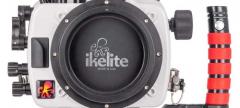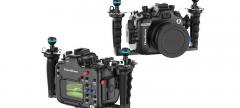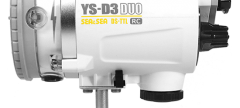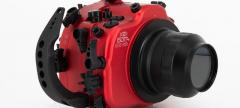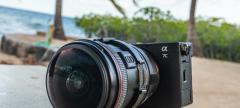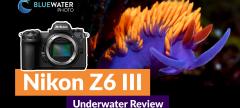Olympus E-PL1 conclusions
Olympus E-PL1 conclusions for land and underwater photography
Using the Olympus E-PL1 on land
The Olympus E-PL1 is a an excellent new choice for amateur photographers who want to take excellent images in a light, compact package with the flexibility of changing lenses. Consumers looking for a small camera with great IQ, HD video capability and live view for home, indoor, outdoor or travel use will not be disappointed. Although lens choice is somewhat limited, an adapter allows you to use the entire range of four-thirds mount lenses, although auto-focus with the adapter many not be the best.
Photographers with an interest in nature photography, portraits, weddings, sports or action might be better off with a used dSLR camera and lens for a similar price - which will give you faster auto-focus, more control over depth of field, and quicker access to changing aperture, shutter speed and ISO via control dials which the E-PL1 lacks.
In the USA the camera is $600 vs $450 for a Canon G11, which makes it more expensive than a compact camera. The Canon G11 has a focal range of 28-140mm, so to get that range on the E-PL1 you are talking about spending a good amount more money. A used Nikon D80 with an 18-5mm VR kit lens would also be around $600. There are many excellent reasons to purchase this camera, but I don't think price is one of them.
Conclusions - using the Olympus E-PL1 for underwater photography
People moving from a compact camera without a wide-angle wet lens will be very pleased with the E-PL1 underwater in the Olympus housing and the kit lens. Image quality will be excellent, and macro shots can be taken with the kit lens, with or without a wet diopter - but I highly recommend a flip diopter.
However, this system does not yet compare to a dSLR setup. The true beauty of a dSLR setup is using a wonderful ultra-wide fisheye lens, doing macro or supermacro with a 1:1 macro lens, and focusing fast on small fish with a long lens like the Nikon 105mm or Canon 100mm. Although these options may appear in the future for E-PL1 users, for now divers taking this camera underwater will have to be happy with photographing fish, doing semi-wide angle with the 9-18mm behind a flat port, and decent macro. Unless you're just using the kit lens, when you add up all the costs, it's also not necessarily that much cheaper than looking for a used Nikon D80 or Canon 40D in an Ikelite housing. But the E-PL1 housing will definitely be smaller. View some photos of the Olympus underwater housing for the E-Pl1 and some actually Olympus E-PL1 underwater photos.
A housing company called 10bar is planning an underwater housing for the Olympus E-PL1 that supports a macro port and a semi-dome port, the housing plus 2 ports will go for around $1100 in the USA.
Alternatively, in the compact world, a G11, S90 or Sea & Sea DX-2G with a fisheye wet lens and a Inon macro lens will also have more capability at the ultrawide / supermacro end than the E-PL1 currently - although this will change if / when more E-PL1 underwater port options & lenses become available.
Underwater with the Olympus EP-01 underwater housing:
- No port changes, currently has one attached macro port, works with only 2 lenses - the Olympus 9-18mm and Olympus 14-42mm.
- The panasonic 45mm macro probably works, $850 US
- Housing material is polycarbonate
- Zoom ring is hard to turn, which you can get used to. Zoom ring is $50 extra
- You must pop-up the flash before putting it in the housing, so don't forget. You can't use the internal flash with housing
- Fiber optic ports only, no sync cord support so make sure your strobes support being fired via fiber optics
- 67mm threaded diopter can be attached with an adapter
- In addition to Olympus, 10bar is producing a housing for this camera
- Third parties could make a dome port for the Olympus housing. I've heard one or two are in the works, but again this will push the price of the system fairly close to the price of a low-end dSLR underwater system, if you compare equivalent systems.






